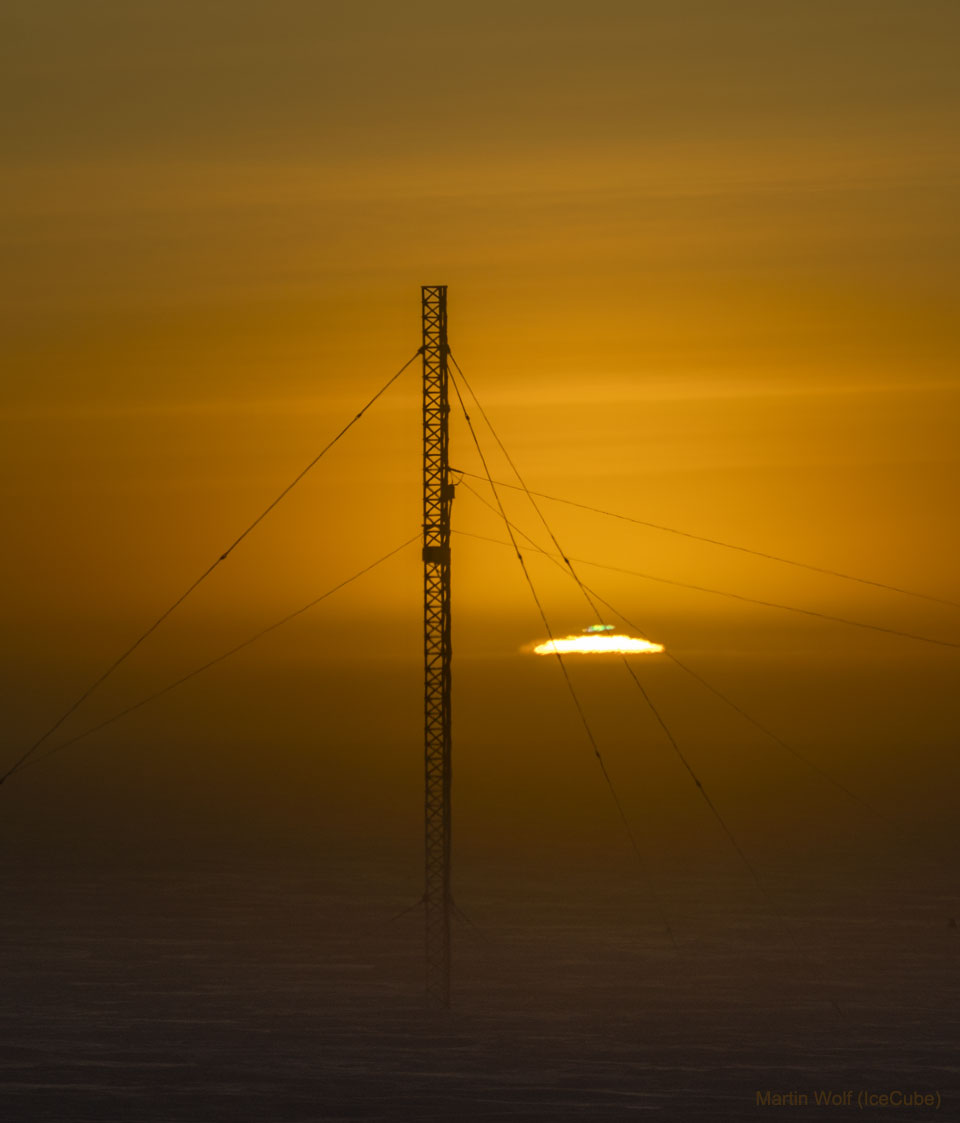2021年10月5日
Sunrise at the South Pole
Image Credit & Copyright: Martin Wolf (U. Wisconsin), IceCube Neutrino Obs., NSF; ht: Alice Allen
Explanation: Sunrise at the South Pole is different. Usually a welcome sight, it follows months of darkness — and begins months of sunshine. At Earth’s poles, it can take weeks for the Sun to rise, in contrast with hours at any mid-latitude location. Sunrise at a pole is caused by the tilt of the Earth as it orbits the Sun, not by the rotation of the Earth. Although at a pole, an airless Earth would first see first Sun at an equinox, the lensing effect of the Earth’s atmosphere and the size of the solar disk causes the top of the Sun to appear about two-weeks early. Pictured two weeks ago, the Sun peeks above the horizon of a vast frozen landscape at Earth’s South Pole. The true South Pole is just a few meters to the left of the communications tower. This polar sunrise capture was particularly photogenic as the Sun appeared capped by a green flash.
Tomorrow’s picture: streaming orion
南极的日出
影像提供与版权: Martin Wolf (U. Wisconsin), IceCube Neutrino Obs., NSF; ht: Alice Allen
说明: 南极的日出非比寻常。不过,在长长数个月的永夜之后,它绝对是让人欣喜的景观,并带来长达数个月的永昼。在地球的南北极,太阳可维持在日出阶段达数周之久,这与任何中低纬度地点,只持续数分钟大异其趣。南北极的日出,并非受到地球自转的影响,而是取决于地球绕行太阳所造成的地轴倾斜。如果地球没有大气,在南北极,只有在春分或秋分那天,才会看到太阳开始冒头。不过,由于地球大气的透镜折射效应及日盘的大小,在南北极见到太阳冒头的时日,会提前将近1个月。在上面这幅2星期前摄于地球南极附近的的影像里,太阳从广袤冰原的地平线后方冒出头来。而南极真实的位置,则在通讯塔左方数公尺之处。此外,这例南极日出也因有绿闪,而更加精采上相。
明日的图片: streaming orion



